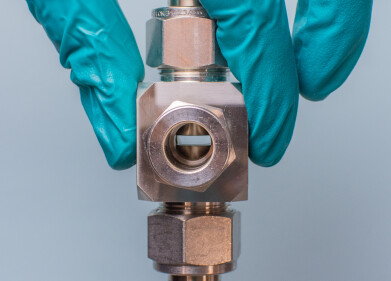Mass Spectrometry & Spectroscopy
How Are Heavy Metals Detected in Cannabis?
Mar 29 2022
While all natural crops are at risk of contamination from heavy metals, cannabis is particularly vulnerable as the plant is a hyperaccumulator. This means it absorbs and accumulates metals at much higher concentrations than most plants. Cannabis and hemp are so efficient at absorbing heavy metals that both plants are used to remediate contaminated soil and rehabilitate toxic waste sites.
A recent scientific study published in the journal Biologia Plantarum revealed the extent of the plant’s hyperaccumulative properties, with the authors finding that industrial hemp can absorb more than 1000 mg/kg of cadmium without a negative impact on growth and development.
Detecting the “big four”
The hyperaccumulative properties of cannabis can be useful for some applications but for medical cannabis growers and manufacturers, it’s important to keep tabs on concentrations of heavy metals such as lead, mercury, arsenic, cadmium. Also known as the “big four”, these metals can accumulate in the roots, buds, flowers and seeds of the cannabis plant which can compromise medicinal properties and threaten the health of consumers.
In Canada and many states in the USA, regulations introduced in 2020 outline the maximum limits for lead, mercury and arsenic in cannabis. Some states have gone one step further and added limits for silver, copper, zinc, nickel and other metals.
The role of Mass Spectrometry
Mass spectrometry (MS) is one of the most useful methods for detecting heavy metals in cannabis. The analytical technique identifies heavy metals by measuring the mass-to-charge ratio of ions. MS is often paired with other techniques to improve accuracy and precision. In a recent study published in the Journal of AOAC International, the authors identified Inductively Coupled Plasma Mass Spectrometry (ICP/MS) and microwave-assisted acid digestion as a best-in-class method to detect trace metals in cannabis.
Inductively Coupled Plasma Optical Emission Spectrometry (ICP/OES) is another method used to isolate and quantify heavy metals in cannabis samples. Flame Atomic Absorption Spectroscopy (FAAS) has been used since the 1960s and forms the building blocks of newer techniques like Graphite Furnace Atomic Absorption Spectroscopy (GAAS) used to detect arsenic, lead, selenium and thallium. Liquid Chromatography (LC) is less common than the methods listed above, though it can be particularly useful for detecting arsenic in cannabis.
Cannabis under the microscope
Heavy metals aren’t the only component put under the microscope in medical cannabis laboratories. Find out more about what scientists test for, including cannabinoids such as CBD and THC, terpenes and pesticides in ‘Medical Cannabis - Testing, Analysis & Identification’.
Digital Edition
Lab Asia 31.6 Dec 2024
December 2024
Chromatography Articles - Sustainable chromatography: Embracing software for greener methods Mass Spectrometry & Spectroscopy Articles - Solving industry challenges for phosphorus containi...
View all digital editions
Events
Jan 22 2025 Tokyo, Japan
Jan 22 2025 Birmingham, UK
Jan 25 2025 San Diego, CA, USA
Jan 27 2025 Dubai, UAE
Jan 29 2025 Tokyo, Japan



















